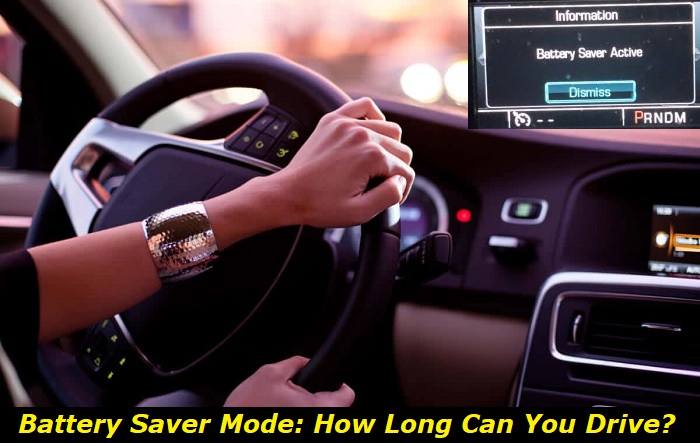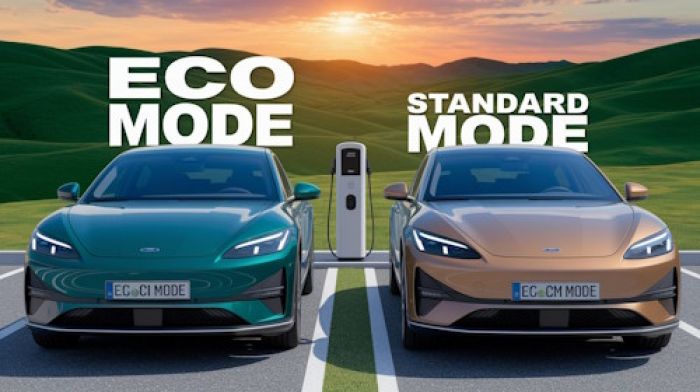When you see that battery saver mode light come on, you may be tempted to drive as far as possible before getting the necessary maintenance. While it is true that driving on battery saver mode will help extend the life of your car's battery, it is not advisable to travel too far while in this state.
Car software problems highlights
- Howcommon:very common
- Main reasons:glitch, voltage problems, hardware issues, wrong settings
- DIY diagnosis:complicated
- DIYrepair:sometimes possible
- Solutions:resetting, changing settings,re-pairingdevices
- Can you drive?yes
- Price in dealership:$150 - $400

What Is a Battery Saver Mode and What Does It Mean?
When in battery saver mode, your car is operating at a reduced power output. This helps to extend your car battery life by reducing the amount of current being drawn from it. However, this is only beneficial if you are able to get to a place where you can recharge or replace the battery.
In a battery saver mode, you will experience a decrease in the performance of your car. This could be anything from slower acceleration to reduced brightness of interior and exterior lights to decreased audio quality. Additionally, certain electronic systems, such as cruise control, heated seats, and navigation, may no longer be available.
What Are the Causes of Battery Saver Mode?
Battery saver mode is typically triggered when your car's battery fails to provide the required amount of current necessary to power all of its systems. Let's take a look at some of the most common causes of this mode:
1) Faulty Wiring
Poorly maintained wiring can lead to increased resistance, resulting in a decrease in the amount of current being delivered to your car's systems. You should always check the wiring in your car on a regular basis to ensure that it is clean and free from any damage or corrosion.
2) Problems with Alternator
Your car's alternator is responsible for supplying the power to charge the battery while you are driving. If there are issues with your alternator, the battery will not be able to recharge, and you may experience battery saver mode.
3) Failing Battery
A failing battery can also cause battery saver mode. Batteries generally last anywhere from three to five years, so if your battery is older than this, you should consider having it replaced.
4) Extreme Weather Conditions
In some cases, extreme temperatures can put additional strain on the battery and cause it to fail prematurely. If the temperature outside is particularly hot or cold, it would be wise to limit your driving time until you can replace the battery.
5) Battery sensor issues
On some cars, a faulty battery sensor can also contribute to battery saver mode. A bad sensor may not be able to detect the amount of current being used, leading to an inaccurate calculation and eventual failure. While your alternator and battery may be in good condition, it is always best to check your car's sensors and adjust if necessary.
There are numerous potential causes for battery saver mode, so it is important to have your car looked at by a professional as soon as you notice the light come on.
How Long Can You Drive in a Battery Saver Mode?
It is essential to note that the amount of time your car will be able to run on battery saver mode depends on several factors, including the age of your battery and how much power it is currently drawing. Generally speaking, most cars can travel up to 10 miles (16 kilometers) on battery saver mode before needing to be recharged. However, it is crucial to note that this number may vary significantly depending on the individual car's electrical system and battery condition.
Generally speaking, you will be able to drive for about 30 minutes to 2 hours on battery saver mode before your car starts to experience power problems, such as dimming lights or lower engine performance.
How to Fix Battery Saver Mode?
Here are some potential fixes for battery saver mode:
- Replace Alternator
If your car's alternator is not functioning properly, it can lead to a decrease in power, resulting in battery saver mode. A qualified mechanic should be able to inspect and replace the alternator if necessary.
- Replace Battery
A failing battery can also cause battery saver mode. If you suspect that your car's battery is in need of replacement, it is best to have a professional inspect and replace it.
- Clean Wiring And Tighten Loose Connections
Poorly maintained wiring can lead to increased resistance, resulting in a decrease in the amount of current being delivered to your car's systems. Cleaning your car's wiring and tightening any loose connections can help to restore the power that is needed in order to prevent battery saver mode from occurring.
- Replace Battery Sensor
On some cars, a faulty battery sensor can also contribute to battery saver mode. A qualified mechanic should be able to inspect and replace the battery sensor if necessary.
When it comes to fixing battery saver mode, it is important to have your car checked by a professional as soon as you notice the light come on, as there are numerous potential causes that can be addressed. This is the best way to ensure that your car's electrical system is functioning properly, allowing it to run smoothly and preventing battery saver mode from occurring.
Tips for Conserving your Car's Battery Power
Since battery saver mode is designed to help you conserve your car's power, it is important to be mindful of your driving habits in order to get the most out of this feature. Here are a few tips for conserving your car's battery power:
- Avoid running any unnecessary electrical systems while in battery saver mode, such as the radio or heated seats.
- Avoid running your car's air conditioning system while in battery saver mode. This is especially important if you are driving in hot weather, as the AC can draw a significant amount of power from the battery.
- Avoid leaving your headlights on while on battery saver mode.
- Drive at a steady speed while on battery saver mode, as accelerating and braking quickly can put an extra drain on the battery.
- Stop and recharge your car's battery as soon as you notice the battery saver mode light come on.
These tips will help you to drive your car as long as possible on battery saver mode.
How to Extend the Life of Your Car's Battery?
In addition to following the tips mentioned above, there are several other things you can do to extend your car battery life and avoid having to use battery saver mode.
- Make sure all components in your car's electrical system are operating properly. Have them inspected regularly by a qualified mechanic.
- Clean off the terminals of your car battery with a mixture of baking soda and water.
- Avoid short trips in your car, as this can put extra strain on the battery.
- Park in shaded areas when possible to reduce the amount of heat absorbed by the battery.
- Keep an eye on how often you use electronics such as cell phones and other devices that can draw power from the battery.
- Make sure your car's alternator is running properly by having it inspected regularly.
- Purchase batteries only from reliable sources and use only manufacturer-approved batteries.
By following the abovementioned tips, you can ensure that your car's battery will last longer and avoid having to rely frequently on battery saver mode.
Bottom Line
Being able to drive on battery saver mode can help extend the life of your car's battery and save you time and money. However, it is important to understand what causes the feature to activate in order to be able to properly diagnose any potential issues.
Additionally, there are several tips you can follow to help conserve your car's power and extend the life of your battery. With proper care and maintenance, you can help ensure that your car's battery is running as efficiently as possible and avoid having to rely on battery saver mode.
About the authors
The CarAraC research team is composed of seasoned auto mechanics and automotive industry professionals, including individuals with advanced degrees and certifications in their field. Our team members boast prestigious credentials, reflecting their extensive knowledge and skills. These qualifications include: IMI: Institute of the Motor Industry, ASE-Certified Master Automobile Technicians; Coventry University, Graduate of MA in Automotive Journalism; Politecnico di Torino, Italy, MS Automotive Engineering; Ss. Cyril and Methodius University in Skopje, Mechanical University in Skopje; TOC Automotive College; DHA Suffa University, Department of Mechanical Engineering






Add comment